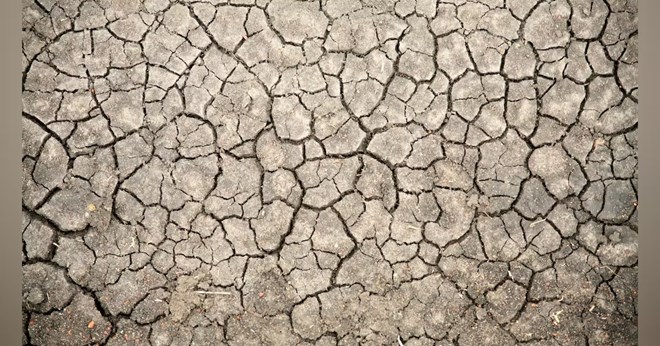
Thursday October 27, 2022
While the Horn of Africa’s main rainy season is declining, groundwater storage may be a major tool in dealing sustainably with frequent droughts.

Dry, cracked soil in the Masai Mara Reserve of Kenya.
A new study suggests that better groundwater supply management could help combat the impacts of drought and food insecurity in East Agrica.
The study, led by the University of Bristol, measured changes in rainfall during the two rainy seasons in the Horn of Africa — a region hit hard by frequent drought — over the last 30 years.
Findings showed the total rainfall within the main rainy season, called the long rains, is declining across the Horn of Africa Drylands but rising in the other rainy season, known as the short rains.
These trends, which apply to Ethiopia, Somaliland, Somalia, and Kenya, led the researchers to investigate below groundwater storage, a potential lifeline for drinking water provision, during these periods. They found that water storage has been increasing in recent decades, despite the drying effects of the declining rainy season.
“This was surprisingly paradoxical, but also hugely significant as it points to a possible silver lining that may support climate adaptation,” says lead author Markus Adloff, who conducted the study as a researcher in the School of Geographical Sciences at Bristol. “Our findings suggest groundwater may have the potential to support increasingly food and water insecure rural populations in the Horn of Africa drylands.”
In order to understand this contradictory finding, the research team examined how the characteristics of the rainfall may have changed over time. By analyzing rainfall data, the researchers found that heavy rainfall is becoming more common in the short rains season and is generally high in the long rains season. The findings suggest that, for drylands, the intensity of rainfall within a rainy season might be more important than total rainfall for local groundwater replenishment.
Drylands are regions characterized by low annual rainfall and high evaporative demand, as well as dry rivers and deep groundwater levels. If rain falling on the ground is light and drizzly it can evaporate quickly back into the atmosphere because it is held in the shallow parts of the soil. However, if it is intense and heavy, it produces runoff in the dry riverbeds which can then infiltrate deep into the soil fast and escape evaporation back into the atmosphere.
This mechanism helps explain why, even with the drop in the ‘long rain’ seasonal totals, the combination of high rainfall intensities in both seasons appeared to be contributing to the greater levels of below groundwater storage.
The researchers went on to demonstrate that the increasing water storage is not linked to any rise in soil moisture near the surface, confirming it represents banked water deep below ground and likely contributing to a growing regional groundwater aquifer in this region.
The findings provide a much-needed glimmer of hope, as the Horn of Africa drylands are enduring a fifth consecutive season of below-average rainfall, exacerbating the ravaging effects of drought including 50 million people facing famine, water shortages, livestock deaths, and failed crop harvests. A sixth failed rainy season has also been forecasted for next year, further compounding the scale of devastation.
At this stage, the researchers say that they still don’t know the depth and quality of the available groundwater. Whether the discovered trends would continue under successive episodes of failed seasonal rains also needs to be ascertained.